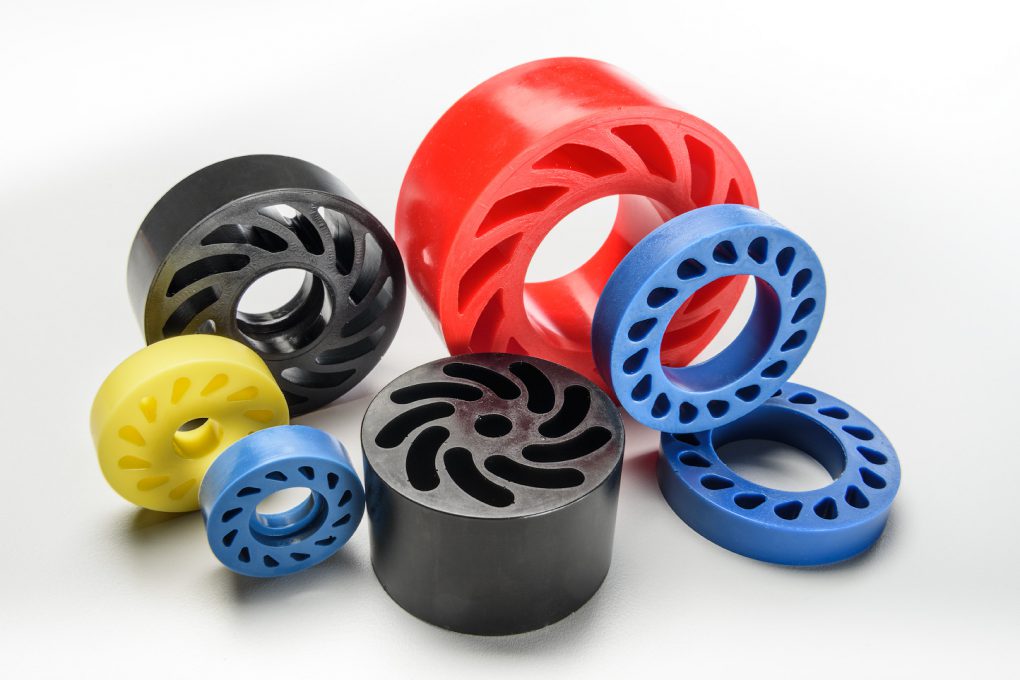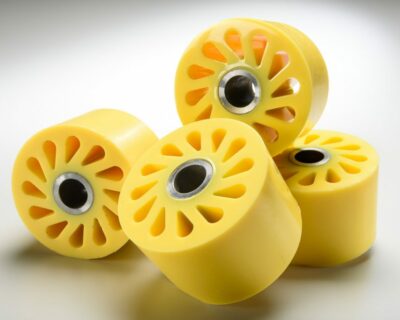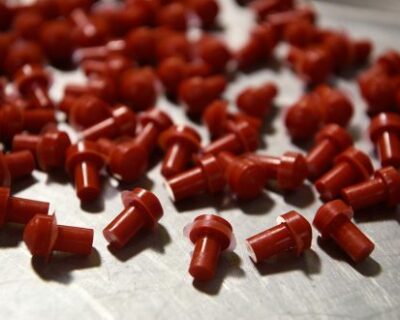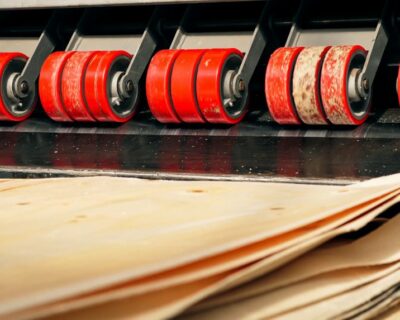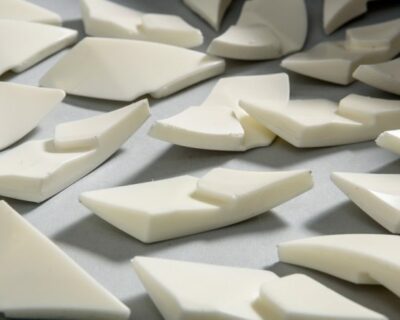Here you’ll find some of the questions people ask about urethane no-crush or zero crush rollers and wheels.
How come they’re called “no-crush” or “zero crush”?
Great question! It’s actually a misnomer as the roller or wheel itself is relatively flexible or pliable (when compared to other roller / wheel types).
No-crush rollers and wheels are generally used in industrial and manufacturing applications where the roller / wheel needs to be flexible — either because of a variation in the thickness of the product passing by the roller or wheel or because the roller or wheel needs to be pliable so that the product passing beneath it doesn’t get damaged.
Think of “no crush” or “zero crush” as meaning the roller or wheel won’t crush or damage whatever is passing over or under it on a conveyor line. You can find no-crush wheels in industrial applications such as:
- Corrugated cardboard manufacturing
- Printing
- Textile manufacturing
- Product labeling
- Material handling
- Any type of application where a flexible or cushion action would benefit
Why do no-crush wheels have holes or spaces in them?
The spaces are what give the no-crush roller or wheel its flexibility. However, it’s the geometry of the vanes — the urethane that separates the spaces — that is really important!
The shape of the vane, its length, angle and thickness, the size of the space between each one, and the number of them per wheel are what give no-crush rollers and wheels the ability to:
- Flex and move product along without damaging it
- Provide cushioning and shock absorption
- Deliver consistency with regard to pressure applied
Vanes and vane patterns are also what give no-crush wheels their longevity. The constant flexing produced by the no-crush design minimizes fatigue and premature failure.
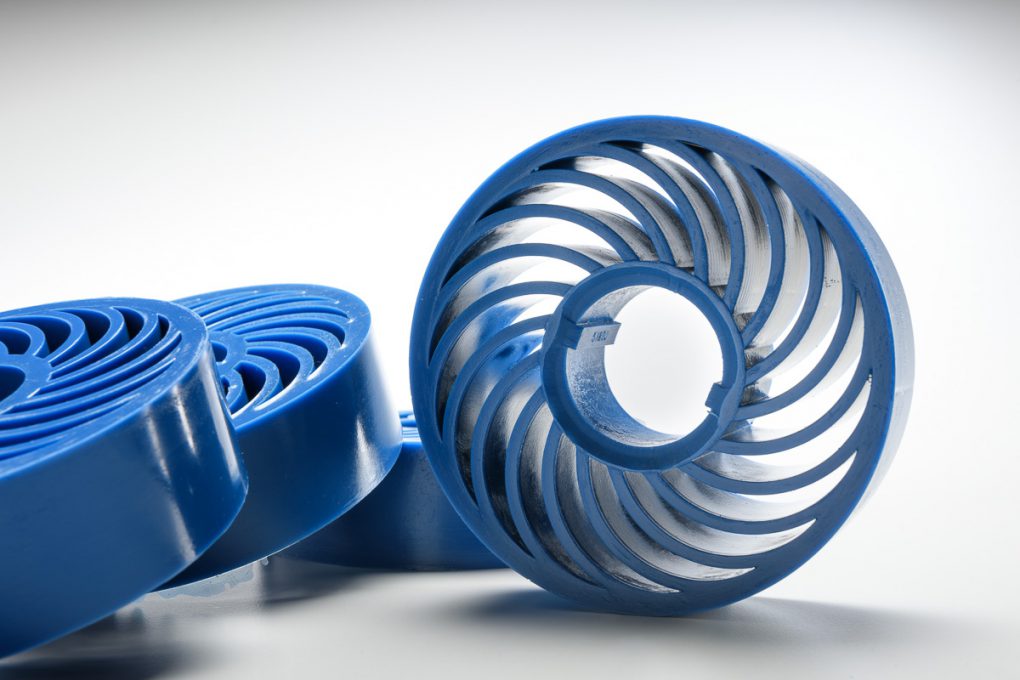
We can also create unique vane patterns to ensure the wheel “crushes” (or flexes) to a customer’s specification. By varying the durometer along with the frequency and geometry of the vanes, the possibilities are almost endless.
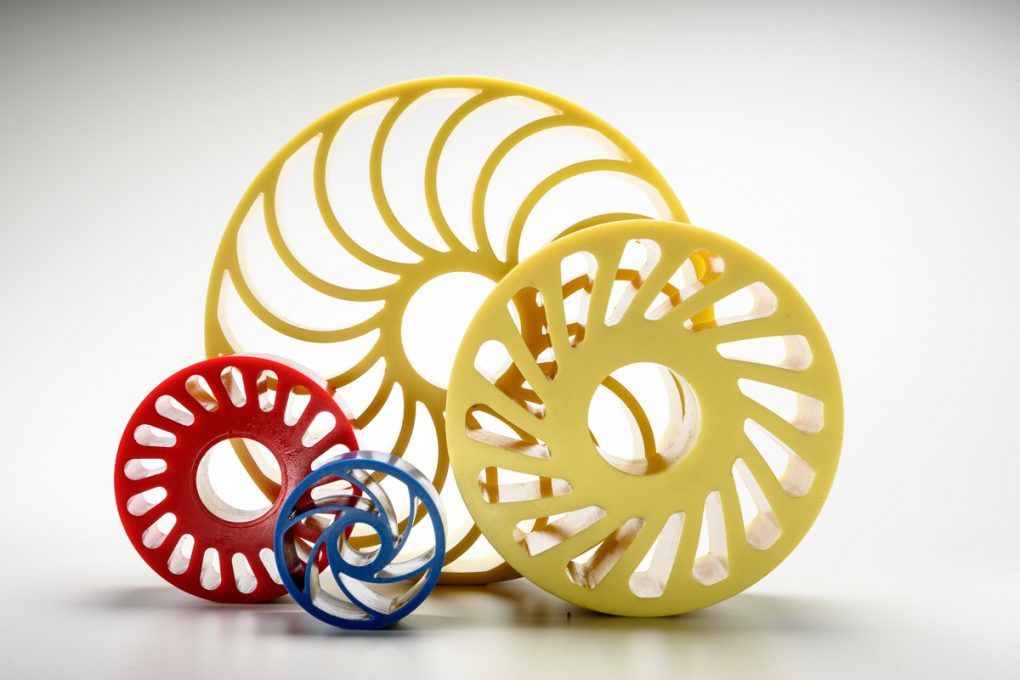
What’s the standard durometer for a no-crush wheel?
We make no-crush wheels from 20A up to 85A. It all depends on the desired function of the part. The options with geometry, material selection and hardness allow for a variety of ways to achieve the same result. (See our durometer scale to see how a no-crush wheel compares to harder or softer durometers.)
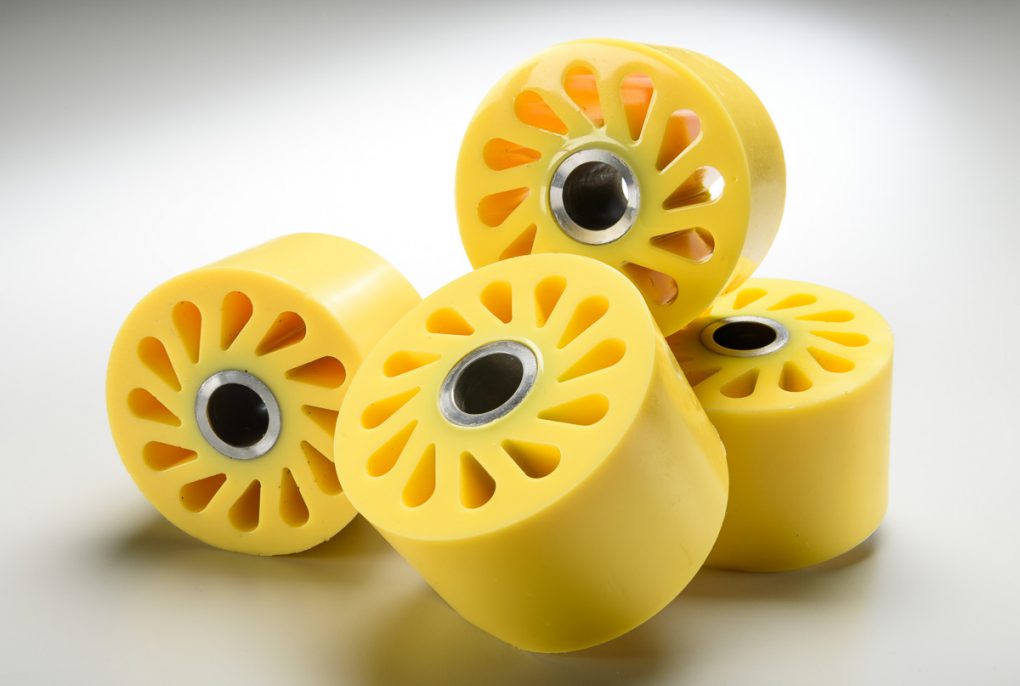
Do no-crush rollers and wheels have inserts or cores?
It depends on the application. Some no-crush wheels simply have a center opening, as you can see in the photo at the top of the page.
Driving applications, where the material is to be driven or pulled and is uneven in nature, often require an insert or core.
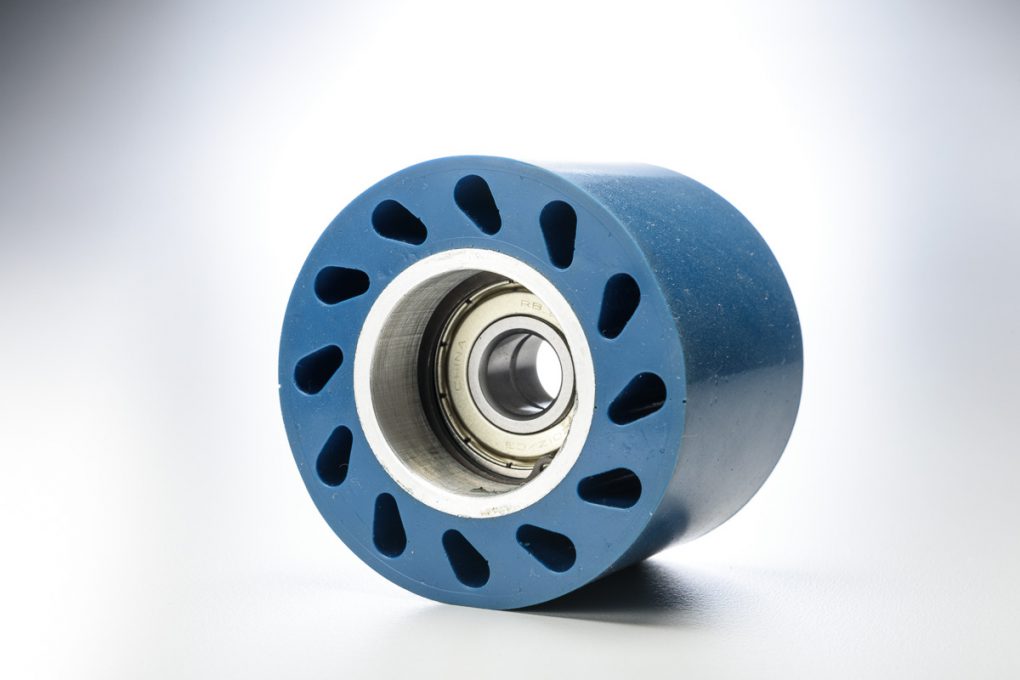
For idler applications, zero crush rollers and wheels can have a pocket cast at the center into which a bearing is pressed by hand. If the bearing wears out, you can easily replace it.
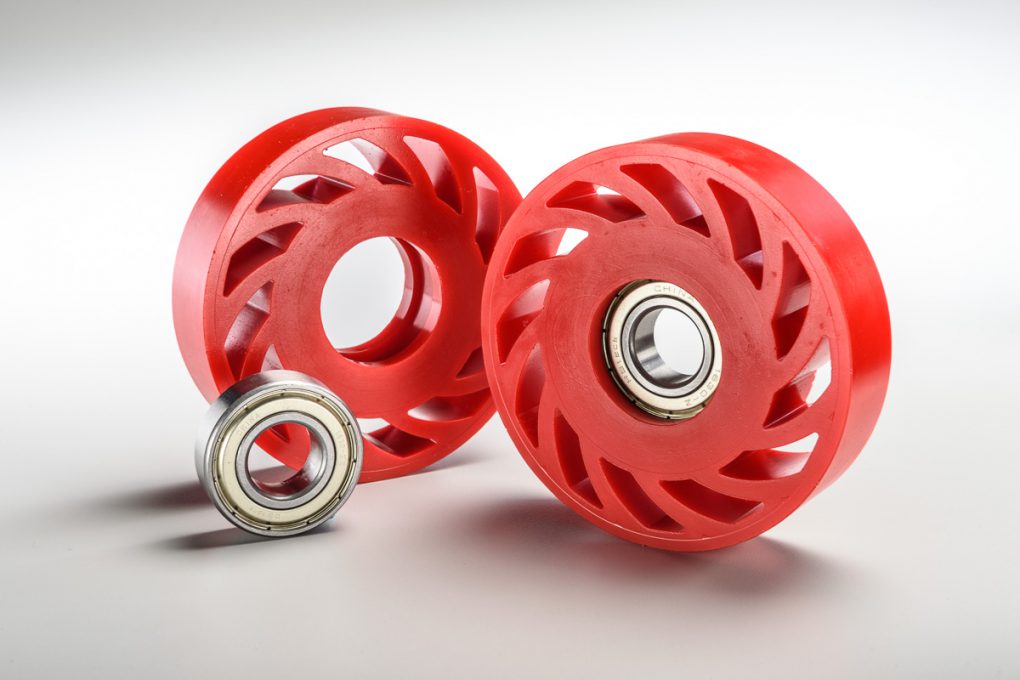
Can you recover our no-crush rollers or wheels that have a metal insert?
Yep, we sure can. However, depending on the part, the insert, and the size of both, it may be more cost-effective to create new parts. If you want to inquire about recovering your rollers or wheels, send us a photo via email and we’ll get back to you right away.
Does Urethane Innovators make standard rollers or wheels or is everything custom?
We don’t make stock wheels in advance and then sell you something that’s close to what you’re looking for. Everything we do is custom — meaning, it’s based on your application and the challenge you’re trying to solve.
We do, however, specialize in high volume production runs and can make specialty no-crush urethane rollers and wheels by the hundreds, thousands, or tens of thousands — just let us know!
Can you make no-crush wheels for our speciality application on an ongoing basis?
Yes, you bet! We have many clients who have us manufacture a set number of rollers or wheels either monthly or quarterly.




